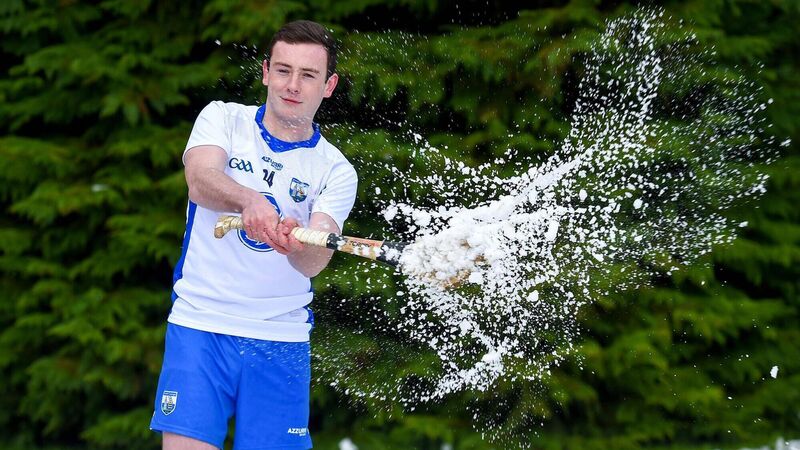Will conditions dilute heat of Championship battles?: The science behind winter hurling

The summer game in wintertime. How significant are conditions in November when balmy July is the benchmark?
The man to ask? John Eric Goff, Professor of Physics at the University of Lynchburg in Virginia (US), author of Gold Medal Physics: The Science of Sports as well as The Physics of Krav Maga.
First of all, Goff says the coldness of the air in winter can have an impact on the flight of a ball.
“There’s a slight misconception people have with the term ‘humidity’ - they often think that that means the air is heavier, but it’s not. Humidity can actually reduce air drag slightly but temperature is a greater influence on the flight of the ball. On a hot summer’s day the higher temperature leads to a lower density in the air, and that causes less air drag on a ball travelling through the air. So the ball will travel a little further in the summer compared to the winter.”
Is it simplistic to say, then, that the colder it gets the more air drag there is?
“No, that’s right. The colder it gets the denser the air gets - the mass per volume of the air goes up as the temperature goes down. So when the air density goes up, that means the air drag on the ball also goes up.”
In American football, there have been suggestions in the past that players’ calls don’t carry as well in the cold air.
Goff doesn’t see that as particularly significant, though, and in empty stadia hearing teammates isn’t a challenge.

“Sound speed goes up slightly with temperature but I suspect there wouldn’t be a huge change in the players’ communication.
“I think most people, when they think of colder climates making it harder to communicate, they don’t think of the fact that the wind is likely to be blowing, which can obviously influence the propagation of sound.”
Fair enough. There are plenty of hurling games on this weekend: Could the timber in a hurley be affected if the temperature is low enough?
“Absolutely. Any time a ball is hit by a stick or a bat, whatever the case may be, there’s a certain energy loss. That energy loss can be detected by the fact that we hear it, the little sound wave propagating away, but most of the energy loss takes place in the fact that the object struck compresses a little bit.
“There’s a term often heard in the sports world in connection with that, ‘coefficient of restitution’ - it’s a popular term when discussing golf balls and golf clubs. When a ball hits a bat, the coefficient of restitution is the measure of how efficiently energy can be returned to the ball: when you squeeze the ball down and compress it, you want it to return to its normal shape when it’s leaving the bat or stick.
“But the colder it gets, the more the coefficient of restitution goes down. The materials in the bat or in the stick are such that the ability to return energy is actually going down with the temperature.
"So not only are you getting reduced distance in the flight from the air resistance increasing as it gets colder, you’re also getting a little less spring from the bat or stick when the temperature goes down.”
Artificial bats can be used in baseball: can man-made materials make a difference in terms of efficiency?
“Sure, the aluminium bats used here in baseball in the States can return energy a little bit more efficiently than a wooden bat.
“When changing to new materials in a sport then tests and studies have to be carried out to determine the new coefficients of restitution, but one of the main problems with aluminium bats is that they don’t break - in baseball some pitchers like to pitch inside to batters and if they do the ball can break the bat sometimes.
“So it affects hitting and pitching, but not for physics-related reasons.”
And the ball itself? Can it be tweaked to move more faster no matter what the conditions are like?
“This is interesting,” says Goff, “Because testing FIFA footballs and World Cup balls in particular, is a research project for me.
“Roughing up the surface of a ball has the effect of reducing the air drag on the surface.
“This was probably noticed first by accident in Scotland, when golf began to be played.
“They played with a smooth ball when the game was invented, and the bourgeoisie would come and gather the balls that were discarded by the aristocracy. Then they started outdriving them, and it was noticed that if you roughened the surface of the ball then it travelled further.
“Now the modern golf ball has those dimples, over 300 of them; if a baseball didn’t have those 108 lovely double stitches across it then you wouldn’t see the home runs in that sport that you usually see.
“Look at soccer and start with a 32-panel ball - smooth panels - but the last time that was used at a World Cup was 2002.
“In 2006 they used the German Teamgeist ball, with 14 panels; 2010 in South Africa and it’s eight panels.
“But when you reduce the number of panels you run the risk of making the ball too smooth, and one of the problems with the Jabulani ball - and it was our research group which figured it out - was that the transition of air flow around the ball happened at a speed that was too high.
“Goalkeepers thought it looked like a beach ball coming towards them, the drag would ramp it up too quickly.
“One thing you could do for a sport that’s normally played in summer but which is switched to winter, as with Gaelic games, is that you could roughen the surface of the ball slightly to lower the drag on it - that could make up for the increased drag on the ball when the air density goes up as the temperature goes down.”
Talking of goalkeepers . . . why are balls harder to handle when wet?
“The stickiness phenomenon, the wetness and the friction - the thing is, if you have a very tiny layer of saliva or water mixed with dirt then you can increase the friction: you can make things a little stickier and easier to hold.
“But if it’s raining, or the ball is completely soaked, then you have layers of fluid which are gliding over each other. And that reduces the friction with the hand holding the ball considerably if that’s the case - but this is a really complicated topic.”
That’s physics in a nutshell.
Credit Eric Goff for making it understandable.











